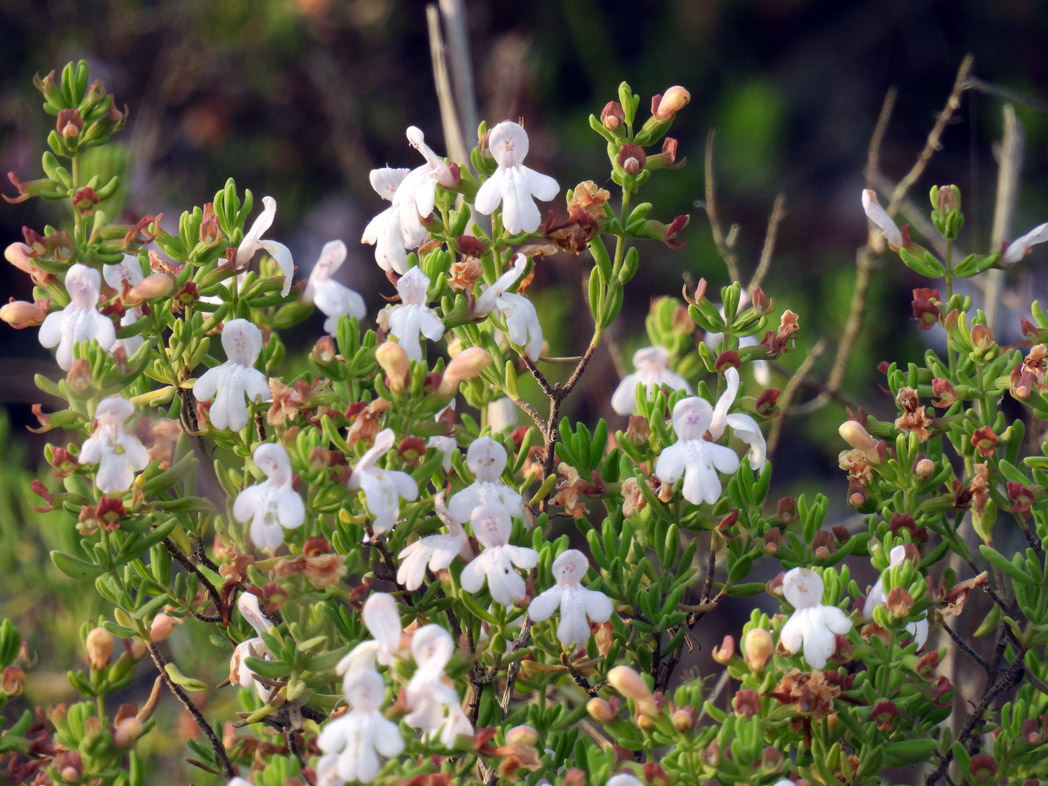Ashe’s calamint
Pictured above: Ashe’s calamint (Calamintha ashei) by ntitelbaum (CC BY). Click on terms for botanical definitions. View post as a PDF.
Also known as Ashe’s savory, Ashe’s calamint (Calamintha ashei) is a state-threatened, perennial deciduous shrub. Its many tubular-shaped flowers are pale lavender; each has a white patch and dark purple dots. Petals and sepals are two-lipped. Leaves are narrow, with revolute margins and a bluish- to grayish-green hue. They are oppositely arranged. When crushed, the leaves emit a strong basil-like aroma. Fruit is a nutlet.
Ashe’s calamint typically blooms in spring but can bloom from January into late summer or early fall. It occurs naturally in scrub and sandhills and is attractive to insects, specifically bees, which are its primary pollinator. The plant is allelopathic, which means it emits a chemical that inhibits the growth of other plants.
The plant’s common name and species epithet refer to William Willard Ashe (1872-1932), a botanist and forester who published over 500 plant names.
Family: Lamiaceae (Mint family)
Native range: Central peninsula
To see where natural populations of Ashe’s calamint have been vouchered, visit florida.plantatlas.usf.edu.
Hardiness: Zone 8B–9B
Soil: Very dry, well-drained, acidic sandy soils
Exposure: Full sun to partial shade
Growth habit: 1.5’ tall and wide
Propagation: Seed, cuttings
Garden tips: Ashe’s calamint is most suitable for a scrub or sandhill restoration or naturalistic landscape, although it can make a nice addition to a dry wildflower garden.
Note: This is a threatened species in Florida. Make sure you obtain plants from a trusted native plant nursery. Visit www.plantrealflorida.org to find a nursery in your area.

